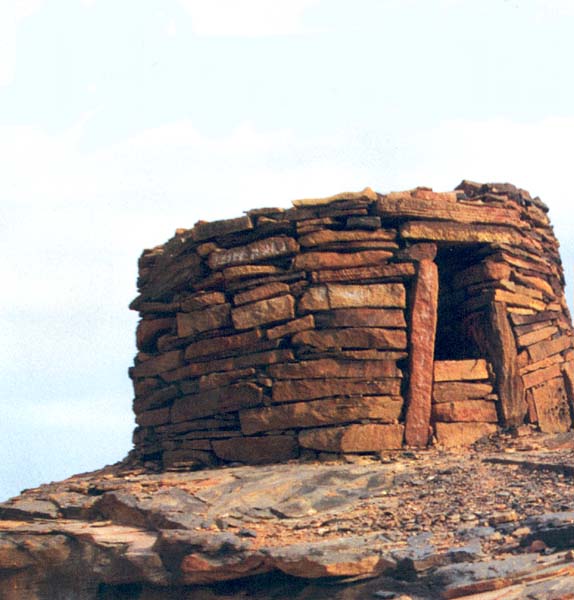Image Details

Richard Nowitz
Legend holds that the Sinai’s nawamis were built by wandering Israelites of the Exodus as protection against swarming mosquitoes. In fact, nomadic goat herders built these round sandstone structures toward the end of the fourth millennium B.C. to bury their dead. The human bones in the nawamis were disarticulated (separated from one another) and clustered around the tombs’ walls—suggesting that the structures were used for secondary rather than primary burials. When a clan member died at some distant pasture land, he or she was buried on the spot; after a year or so, when the corpse’s soft tissues had decayed, the family would carry the bones back to the burial ground and place them in the center of a nawamis, after pushing aside the remains of the prior burial.
